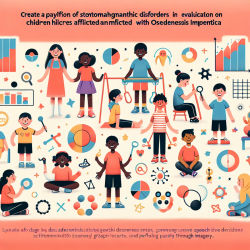In the realm of speech therapy and special education, the quest for effective interventions to support individuals who stutter remains a central concern. The phenomenon of stuttering, characterized by disruptions in the flow of speech, affects individuals across age groups, posing challenges in communication and social interactions. Among the various strategies explored to enhance fluency, choral reading emerges as a fascinating area of study, offering insights into the mechanisms of stuttering and potential pathways for intervention.
Choral reading, or the simultaneous oral reading of material by two or more people, has long been recognized for its potential to significantly reduce stuttering. This method, rooted in collective engagement with text, leverages the synchronization of speech patterns, leading to a remarkable decrease in stuttering episodes. The research titled "Winner of the 1997 Isabel Richard Award. Extent and Stability of Stuttering Reduction During Choral Reading" by Kathryn Freeman and Joy Armson provides a compelling exploration of this phenomenon, offering valuable data and insights for practitioners and researchers alike.
The Study's Key Findings:
- Choral reading led to an average stuttering reduction of 94.2% among participants, aligning with historical data that underscore the effectiveness of this intervention.
- Stuttering reduction remained stable over extended periods of choral reading, indicating the durability of its fluency-enhancing effects.
- Variations in individual responses to choral reading were observed, suggesting the need for personalized approaches in stuttering interventions.
The implications of these findings are multifaceted, extending beyond the immediate context of stuttering reduction. For educators, therapists, and specialists in special education, the study underscores the importance of incorporating collaborative and interactive reading activities into therapy sessions. Choral reading not only offers a non-pharmacological, low-cost intervention for stuttering but also fosters a sense of community and shared experience among participants, contributing to their social and emotional well-being.
Practical Applications in Special Education:
- Designing group therapy sessions that incorporate choral reading activities, tailored to the age and interests of the participants.
- Encouraging classroom teachers to integrate choral reading into their teaching methodologies, particularly in settings that include students who stutter.
- Exploring the use of choral reading in conjunction with other fluency-enhancing techniques, such as delayed auditory feedback or speech rate modification, to optimize therapy outcomes.
Furthermore, the study's emphasis on the stability of stuttering reduction through choral reading invites further research into the long-term effects of this intervention. It raises intriguing questions about the neural mechanisms underlying choral reading's impact on speech fluency and how these insights can inform the development of innovative stuttering therapies.
In conclusion, the research on choral reading and stuttering reduction provides a compelling case for the inclusion of this strategy in speech therapy and special education programs. By fostering a deeper understanding of the conditions that facilitate fluent speech, educators and therapists can better support individuals who stutter, empowering them to communicate more effectively and confidently.
For those interested in exploring this topic further, I highly recommend reading the original research paper, which offers a detailed account of the study's methodology, findings, and implications. To read the original research paper, please follow this link: Winner of the 1997 Isabel Richard Award. Extent and Stability of Stuttering Reduction During Choral Reading.










